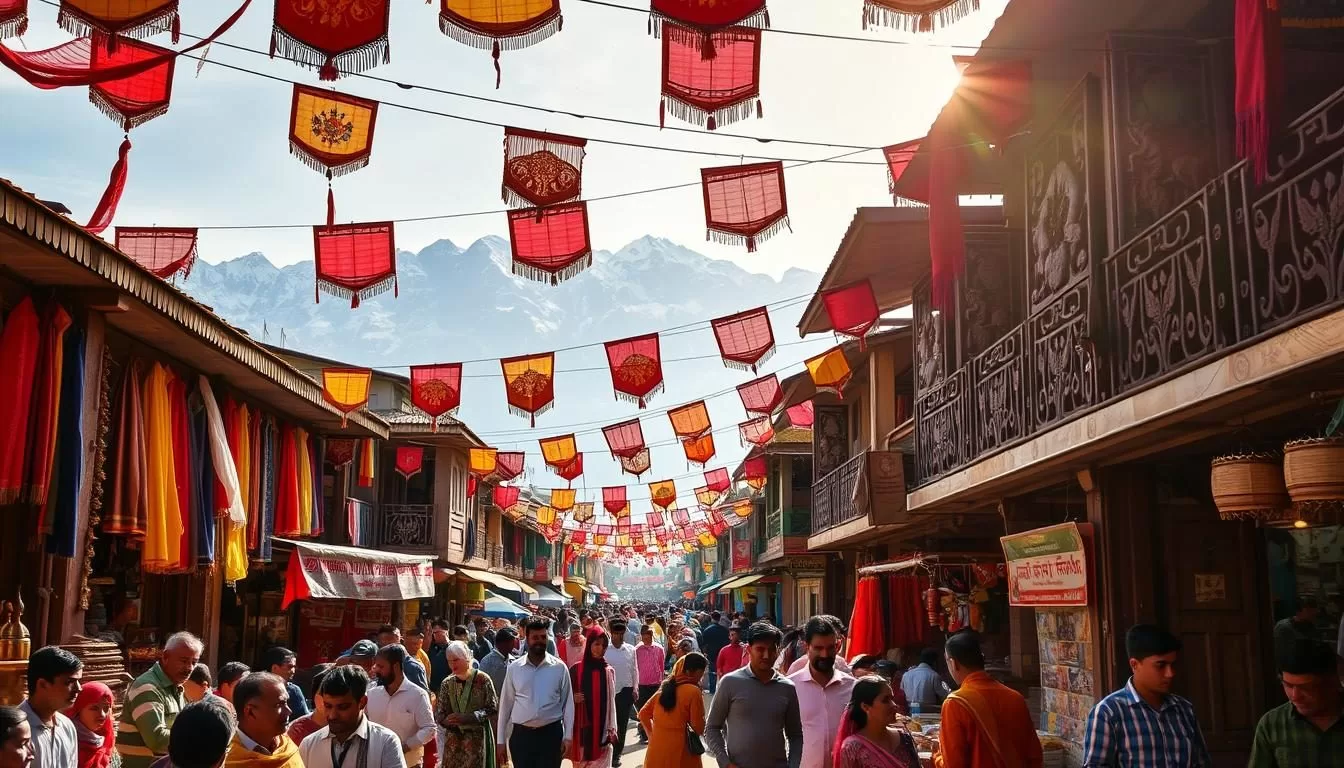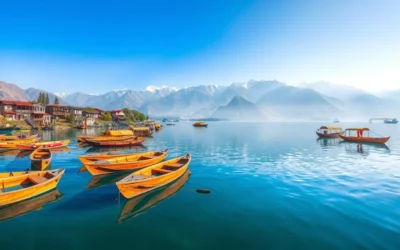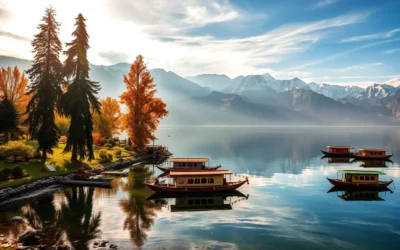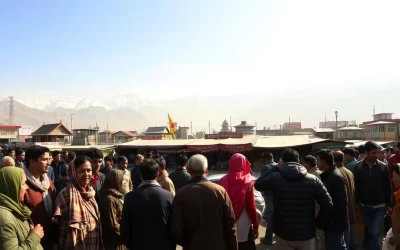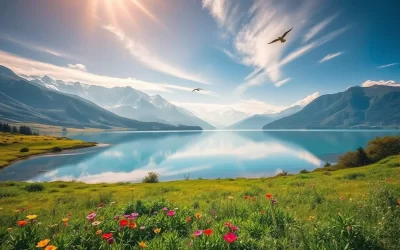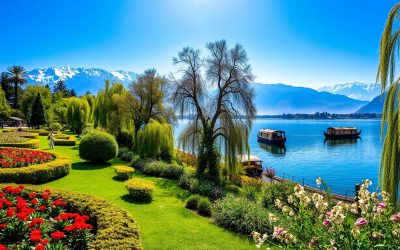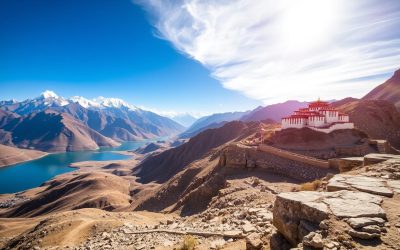✓ Accommodations✓ Flights✓ Rental Cars✓ Tours & Activities
Discover the vibrant cultural heritage of Jammu Kashmir, a region that is not just breathtakingly beautiful but also rich in diverse traditions and religions. The festivals celebrated here are a testament to the region’s cultural richness.
You’ll experience a unique blend of Hindu, Muslim, Buddhist, and Sikh traditions through its grand festivals. From the famous Baisakhi festival to the grand Tulip Festival, the region offers a plethora of festivities that will leave you mesmerized.
The culture of this region is beautifully reflected in its festive celebrations, making it a perfect destination for travelers seeking authentic local experiences. Whether you’re visiting during the vibrant Baisakhi or the serene Tulip Festival, you’ll witness traditions that have been preserved for generations.
The Cultural Tapestry of Jammu and Kashmir Through Its Festivals
As you explore Jammu and Kashmir, you’ll discover that its festivals are a window into the region’s rich cultural tapestry. The state of Jammu and Kashmir has diverse cultural traditions, with the three provinces of Kashmir, Jammu, and Ladakh each contributing unique elements to the territory’s festival landscape.
The festivals in Jammu and Kashmir serve as living museums that preserve ancient traditions, rituals, and artistic expressions. The region’s religious diversity shapes its celebration calendar, with Hindu, Muslim, Buddhist, and Sikh festivals holding important places.
| Region | Major Festivals | Cultural Significance |
|---|---|---|
| Kashmir Valley | Tulip Festival, Shikara Festival | Celebrates natural beauty and cultural heritage |
| Jammu | Baisakhi, Kheer Bhawani Mela | Reflects the region’s rich cultural and religious diversity |
| Ladakh | Hemis Festival, Losar | Showcases Buddhist traditions and cultural practices |
These celebrations often transcend religious boundaries, demonstrating the syncretic culture that has evolved over centuries in Jammu and Kashmir.
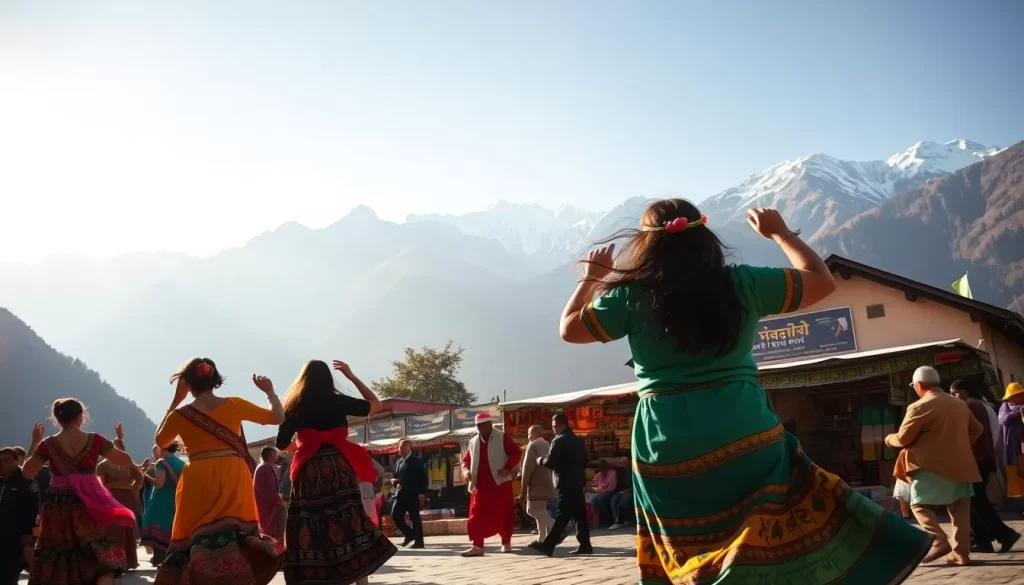
Tulip Festival: A Colorful Spring Celebration
Every spring, the Tulip Festival transforms Kashmir into a colorful spectacle. The festival is held annually in the Indira Gandhi Memorial Tulip Garden in Srinagar, showcasing the region’s natural beauty and rich cultural heritage.
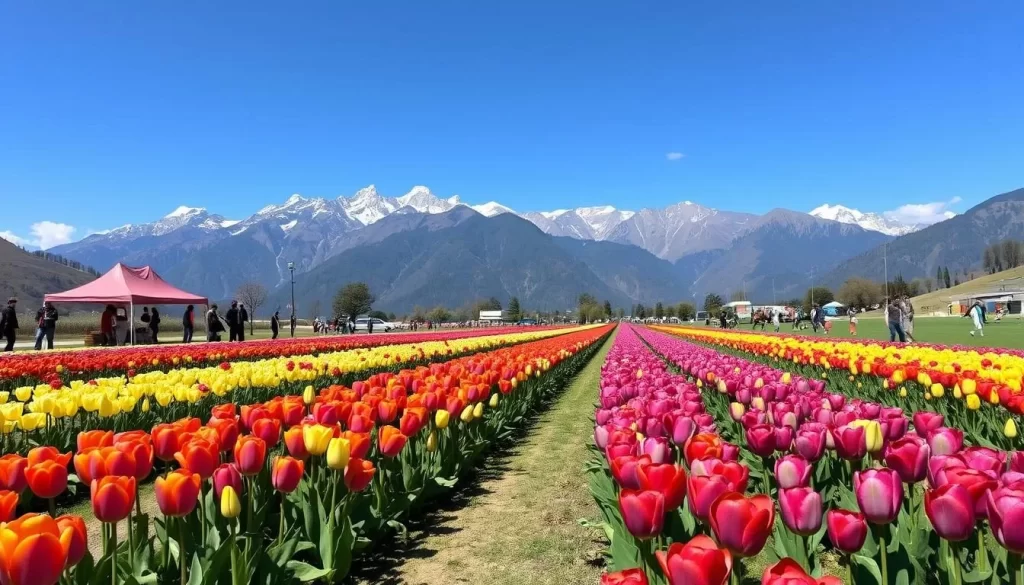
When and Where to Experience the Tulip Festival
The Tulip Festival typically takes place throughout April, when millions of tulips bloom across Asia’s largest tulip garden. The garden, spanning over 30 hectares, is situated below the Zabarwan range, overlooking the picturesque Dal Lake.
What to Expect at Asia’s Largest Tulip Garden
You can expect to see approximately 50 varieties of tulips in vibrant colors, creating a breathtaking panorama. The garden’s terraced structure and specially nurtured flowerbeds make it a must-visit destination.
Activities and Cultural Programs During the Festival
During the festival, you can enjoy cultural performances, traditional music, local handicraft exhibitions, and savor Kashmiri cuisine. The event has become a symbol of spring’s arrival in Kashmir and an important economic driver for the region, attracting thousands of visitors every year.
Amarnath Yatra: A Sacred Pilgrimage
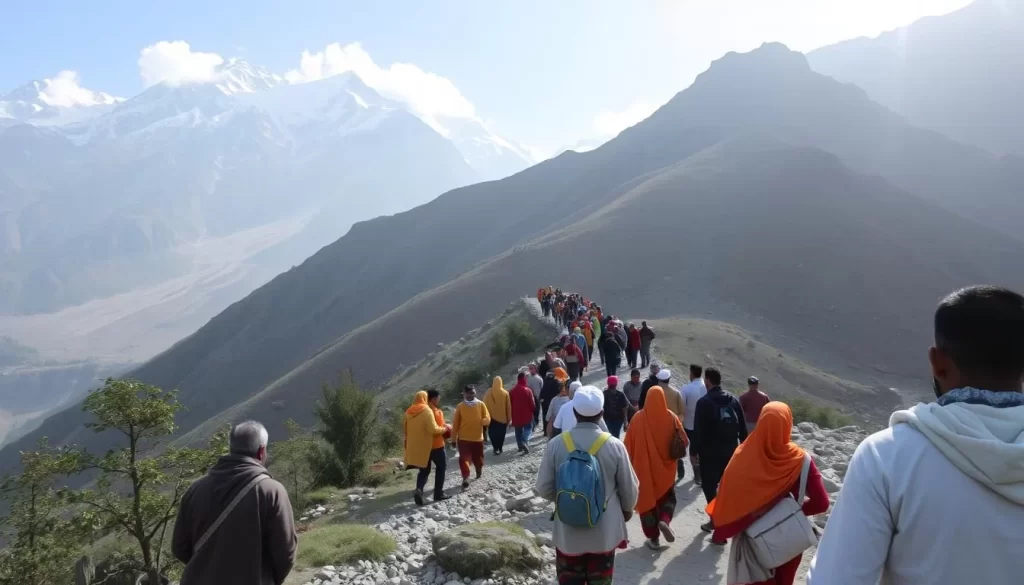
In the union territory of Jammu and Kashmir lies the Amarnath Yatra, a pilgrimage of immense spiritual importance. The Amarnath cave, located about 140 km from Srinagar, is one of the holiest sites for Hindus, housing a stalagmite formation believed to be a representation of Lord Shiva.
The Religious Significance of the Amarnath Cave
The cave is revered as the place where Lord Shiva revealed the secret of immortality to Goddess Parvati. This sacred site is the focal point of the Amarnath Yatra, drawing lakhs of devotees who undertake the challenging journey to connect with the divine.
The Journey: Routes and Preparations
The Yatra begins with a 43 km trek from Nunwan to Chandanwari in the Pahalgam region. Alternatively, pilgrims can take the shorter but steeper route from Baltal. Preparations include registering for the Yatra, arranging for accommodations, and ensuring physical fitness for the trek.
Best Time to Participate in the Yatra
The ideal time for the Amarnath Yatra is between June and August when the ice formation is at its peak and the mountain passes are accessible. Planning your visit during this period ensures a smoother and more meaningful experience.
Shikara Festival: Celebrating Kashmir’s Iconic Boats
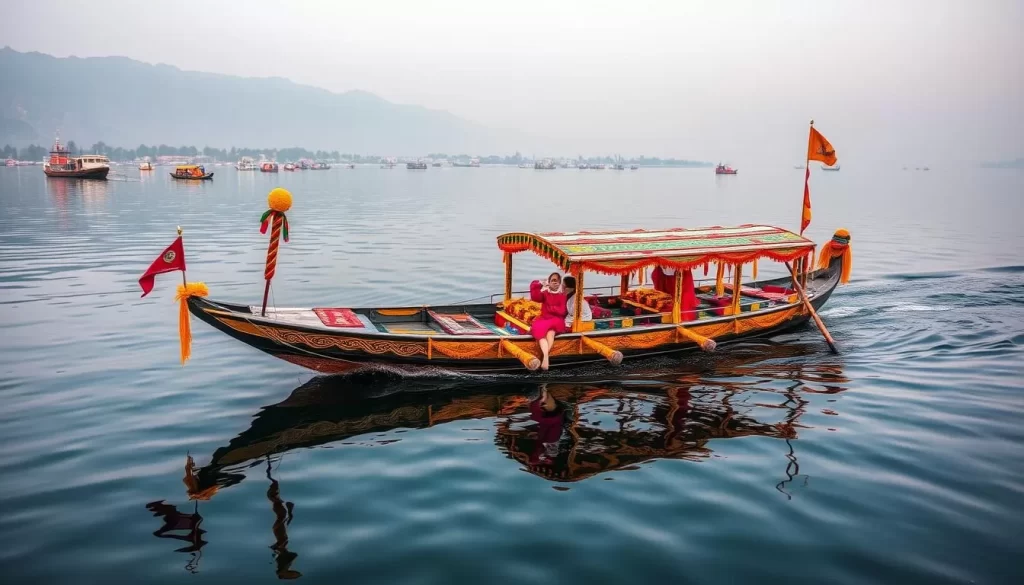
Kashmir’s iconic shikaras take center stage during the Shikara Festival, a colorful event that attracts visitors from around the world to Dal Lake. This annual festival, which takes place every year during July and August, transforms the lake into a spectacular showcase of Kashmir’s rich cultural heritage.
The Vibrant Boat Races and Decorations
The main highlight of the Shikara festival is the enchanting Shikara race. The Dal Lake comes alive with a magnificent display of beautifully decorated shikars, each including unique designs and outstanding works of art. The competitive elements of the festival include thrilling shikara races where boatmen demonstrate their skill and speed.
Cultural Performances and Activities at Dal Lake
The Shikara Festival is not just about the boats; it’s also a celebration of Kashmiri culture. You can witness traditional Kashmiri music and dance performances, as well as handicraft demonstrations that take place on floating platforms and along the lake’s edge. The festival has quickly become an important tourism draw, allowing visitors to experience the central role that Dal Lake and its shikaras play in Kashmiri cultural identity.
Hemis Festival: Ladakh’s Colorful Buddhist Celebration
You’re invited to experience the Hemis Festival, a vibrant celebration in Ladakh that showcases the rich cultural heritage of Tibetan Buddhism. This significant event commemorates the birth anniversary of Guru Padmasambhava, who brought Buddhism to the Himalayan region.
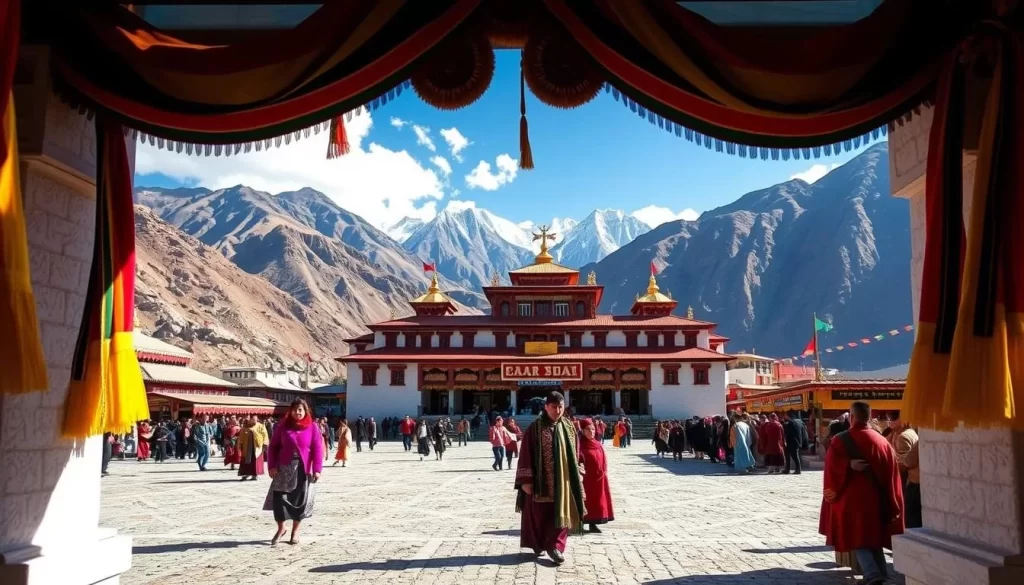
The Mask Dances and Their Significance
The Hemis Festival is renowned for its Cham dance performances, where monks wear elaborate masks and costumes representing various deities and demons. These choreographed movements tell sacred stories and symbolize the triumph of good over evil, making the festival a unique cultural experience in Jammu and Kashmir.
Experiencing the Festival at Hemis Monastery
Visiting Hemis Monastery during the festival is an unforgettable experience. You’ll witness the unfurling of a massive thangka of Guru Padmasambhava, accompanied by traditional music played on long horns, cymbals, and drums. The monastery, the largest in the region, is the central venue for this vibrant celebration, attracting visitors from around the world.
Baisakhi: Welcoming the Harvest Season
The Sikh community in Jammu and Kashmir comes together to celebrate Baisakhi, a festival that signifies the start of the new harvest season and the Sikh new year. Celebrated on April 13 or 14 every year, Baisakhi is a significant occasion that is observed with great enthusiasm.
Traditional Celebrations and Rituals
On this auspicious day, devotees wake up early to participate in special prayers and rituals at gurdwaras. They take part in Nagar Kirtans, singing devotional songs and showcasing martial arts skills. The festival commemorates the formation of the Khalsa Panth in 1699, a pivotal event in Sikh history.
Significance for the Sikh Community in Jammu and Kashmir
Baisakhi holds deep religious significance for the Sikh community as it marks the birth anniversary of Guru Gobind Singh, the tenth Sikh guru. The community comes together to participate in langars (community meals), embodying the Sikh principle of equality. Devotees also take ceremonial dips in holy water bodies, considering this act holy.
| Aspect | Description | Significance |
|---|---|---|
| Celebration Date | April 13 or 14 | Marks the beginning of the new harvest season |
| Religious Significance | Birth anniversary of Guru Gobind Singh | Commemorates the formation of the Khalsa Panth |
| Community Activities | Nagar Kirtans, Langars | Embodiments Sikh principles of equality and community service |
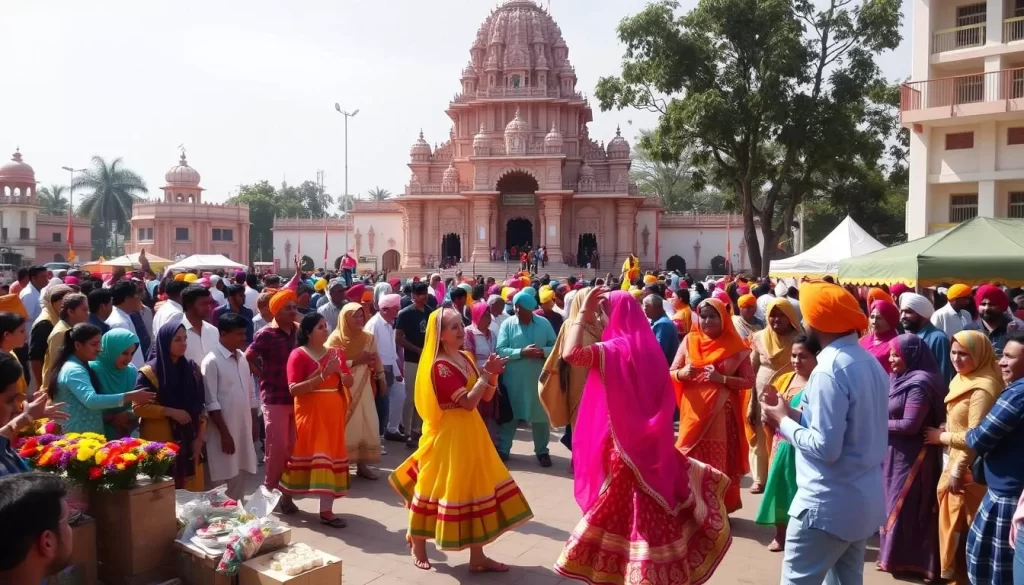
Sindhu Darshan Festival: Honoring the Indus River
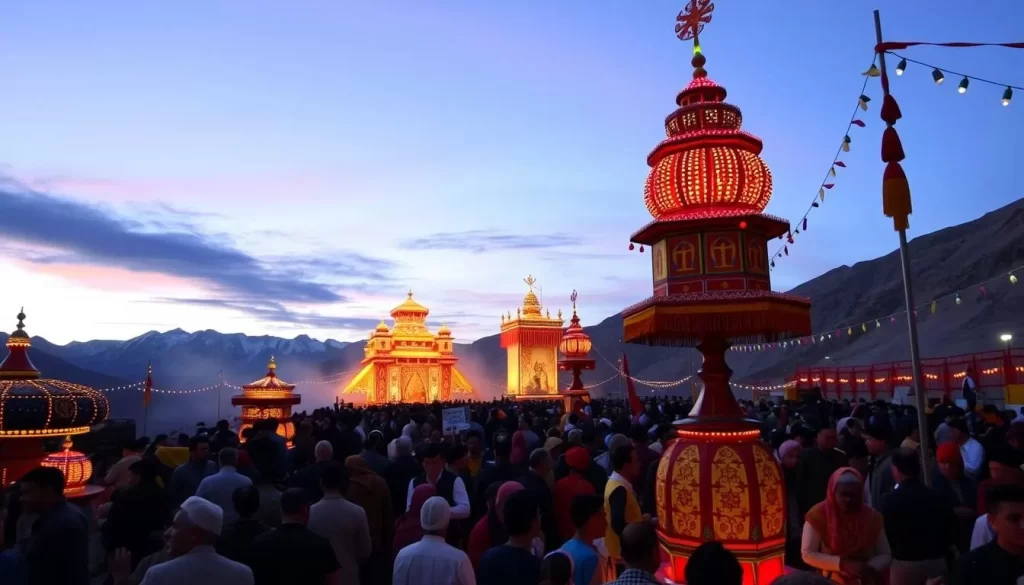
If you’re looking for a cultural experience like no other, the Sindhu Darshan Festival is a must-visit event. Held annually on the banks of the Indus River near Leh, this festival celebrates the river as a symbol of India’s cultural unity and diversity.
Ceremonies and Cultural Programs
The Sindhu Darshan Festival includes various ceremonies and cultural programs. The festival begins with a ceremony where devotees and monks offer prayers to the river. You can experience the rich cultural heritage of the region through traditional music and dance performances.
Participating in the River Worship Rituals
One of the unique aspects of the Sindhu Darshan Festival is the river worship ritual. Participants bring water from rivers near their homes and pour it into the Indus, symbolizing the confluence of diverse cultures. This ritual is a powerful symbol of national integration and peace.
The festival typically takes place over three days in June or July, attracting people from diverse backgrounds. While river rafting isn’t a primary activity, the festival offers a chance to experience the natural beauty of the Indus River. The Sindhu Darshan Festival is one of the many vibrant festivals in Jammu and Kashmir, showcasing the region’s rich cultural tapestry.
Gurez Festival: Exploring a Hidden Valley
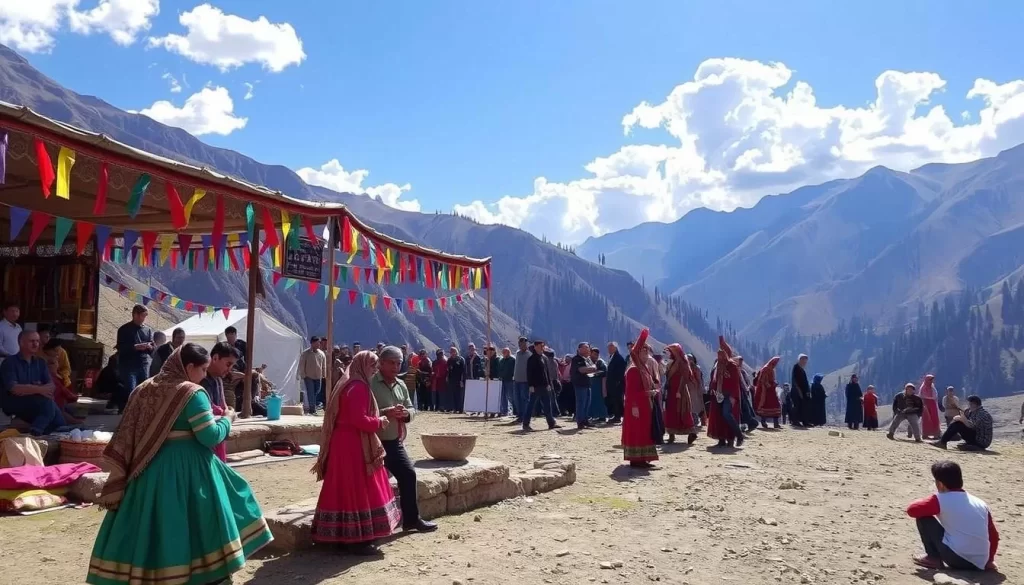
The Gurez Festival is a unique opportunity to experience the untouched beauty and cultural richness of this remote Kashmir valley. Located approximately 123 kilometers from Srinagar at an elevation of around 8,000 feet, Gurez Valley is a serene and picturesque destination.
Adventure Activities and Cultural Showcases
The festival offers a mix of adventure and culture, with activities like river rafting on the Kishanganga River, trekking, mountain biking, and zorbing. You can also enjoy cultural showcases featuring local handicrafts, traditional Gurez cuisine, and folk music and dance performances.
Local Crafts and Cuisine to Experience
During the Gurez Festival, typically held in July or August, you can witness the rich heritage of the Dard-Shin community. The event promotes sustainable tourism, preserving traditional lifestyles while creating economic opportunities for local communities. You’ll have the chance to savor local cuisine and explore handicrafts on display.
Saffron Festival: Celebrating Kashmir’s Golden Spice
Experience the Saffron Festival, a colorful event that celebrates Kashmir’s renowned saffron. This 8-day festival coincides with the saffron harvesting season in late October to early November.
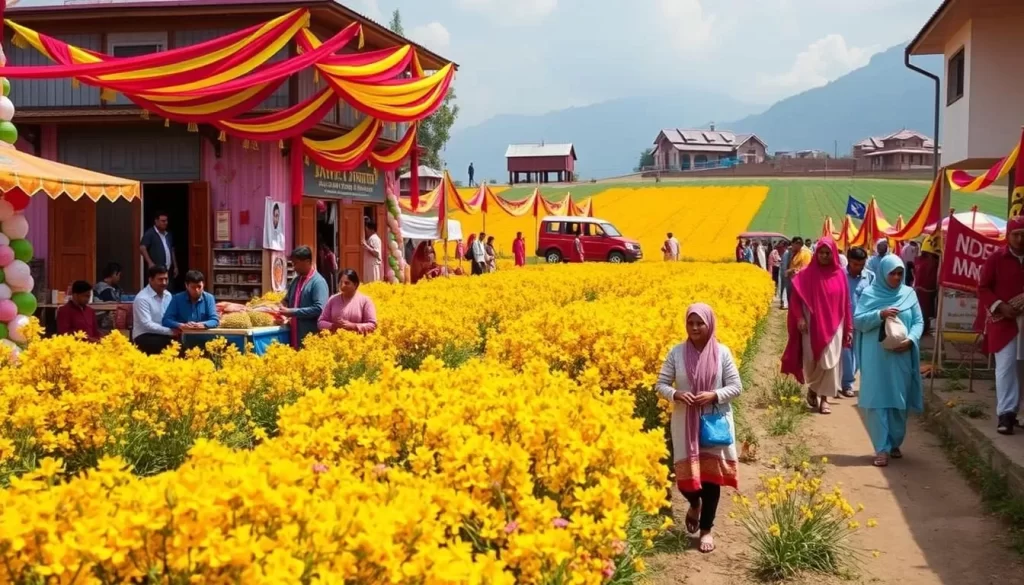
Harvesting Experiences and Cultural Performances
Join local farmers in the traditional harvesting process, picking flowers at dawn and separating the precious red stigmas. The festival features folk dance performances and music recitals, showcasing the region’s rich cultural heritage.
Saffron Products and Culinary Delights
Sample various saffron-infused delicacies, including traditional Kahwa tea and elaborate Wazwan dishes. You can also purchase authentic saffron products directly from producers, learning about the spice’s medicinal properties and culinary applications.
Losar: The Tibetan New Year in Ladakh
Losar, the Tibetan New Year, is a celebration like no other, deeply rooted in Ladakh’s history and traditions. Traditionally observed for fifteen days, Losar is one of the most well-known holidays in Jammu & Kashmir. The festival has a unique historical twist, celebrated two months earlier than in other Tibetan regions due to a decision by the 16th-century Ladakhi king Jamyang Namgyal.
Traditional Rituals and Customs
The preparations for Losar begin days in advance, with locals undertaking a thorough house-cleaning routine to remove negative energies and make space for fresh starts. Ladakhi homes are purified with incense made from juniper and rhododendron, and decorative sheep’s heads are crafted from colored butter. The creation of tsokmas, or dough sculptures, is another significant activity, representing various auspicious symbols.
Feasting and Cultural Performances
Losar is a time for grand feasts and energetic dancing, followed by sincere prayers and offerings to the gods. Traditional foods like guthuk (dumpling soup), khapse (fried cookies), and chang (barley beer) are enjoyed during family gatherings. Monastery prayers and masked dances are also integral to the celebrations, creating a festive atmosphere where people exchange greetings and gifts to welcome the new year with hope and joy.
| Day | Rituals and Activities |
|---|---|
| Nyi-Shu-Gu | Preparation day, involving cleaning and preparation of special foods |
| Losar | Main day of the festival, marked by feasting and cultural performances |
| Nam-Gang | The day after Losar, continuing the celebrations with rituals like the exchange of “changpu” (barley shoots) |
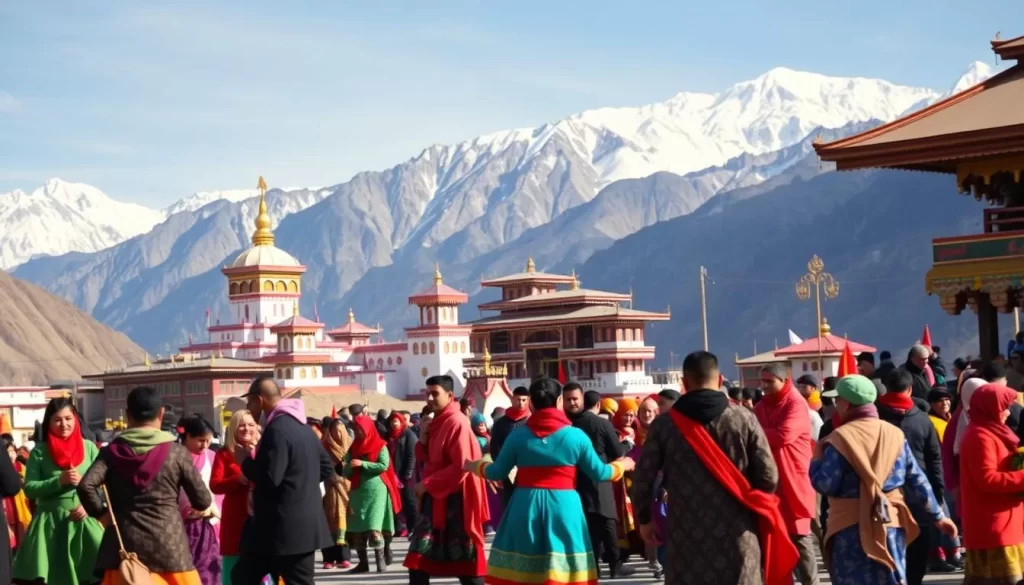
Kheer Bhawani Mela: A Significant Hindu Festival
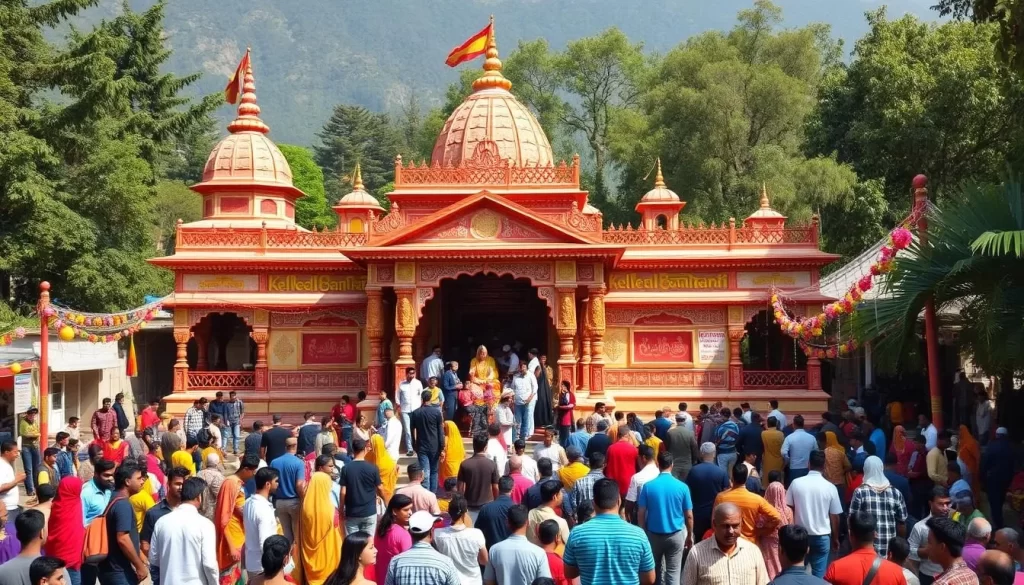
The Kheer Bhawani Mela, dedicated to Goddess Ragnya Devi, is a crucial event for the Kashmiri Pandit community. This annual festival is held at the Kheer Bhawani Temple in Tulmulla, Ganderbal district, and is a significant part of the community’s cultural heritage.
Rituals at the Sacred Spring
The festival involves various rituals at the sacred spring within the temple. Devotees offer kheer (sweet rice pudding), flowers, and incense to the goddess, creating a spiritually charged atmosphere. The mystical spring is believed to change colors, foretelling future events.
Community Gatherings and Offerings
During the Kheer Bhawani Mela, the community comes together to celebrate and offer prayers to the goddess. The festival features cultural performances, devotional music, and community gatherings, strengthening bonds among the Kashmiri Pandit population. It’s a time for people to reconnect with their heritage and community.
Jammu and Kashmir (UT), India: Top Festivals to Check Out When Visiting – Planning Your Festival Tour
Jammu and Kashmir’s festivals are a testament to the region’s indomitable spirit and cultural richness. As you plan your trip, you’ll find that these celebrations offer a unique window into the local culture and traditions. To make the most of your visit, consider the timing of your trip to coincide with the festivals that interest you the most.
Planning Your Festival Tour: You’ll receive practical guidance on planning your festival-focused tour, including tips on the best times to visit and logistical considerations for attending different festivals across the region’s varied terrain. From the Kashmir Valley to Ladakh, each area offers a distinct cultural experience.
The region’s festivals, such as the Tulip Festival, Shikara Festival, and Hemis Festival, provide opportunities for cultural immersion, including experiencing the local cuisine and shopping for traditional handicrafts. Thomas Cook offers Kashmir tour packages that can be customized to include these festival experiences, ensuring a memorable and enriching journey.
By choosing the right tour packages and planning ahead, you can enjoy an authentic and comfortable experience, exploring the beauty and culture of Jammu and Kashmir.
The above is subject to change.
Check back often to TRAVEL.COM for the latest travel tips and deals.
